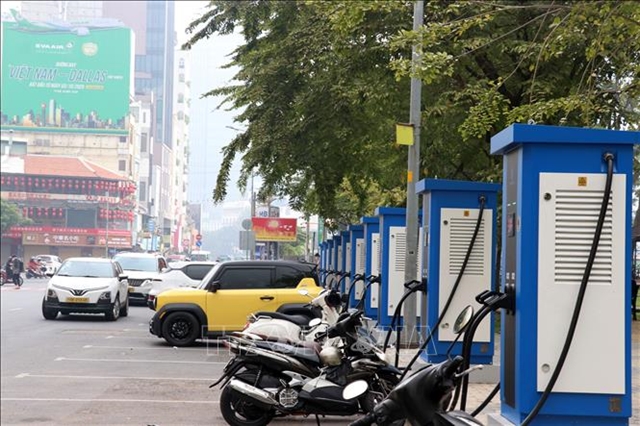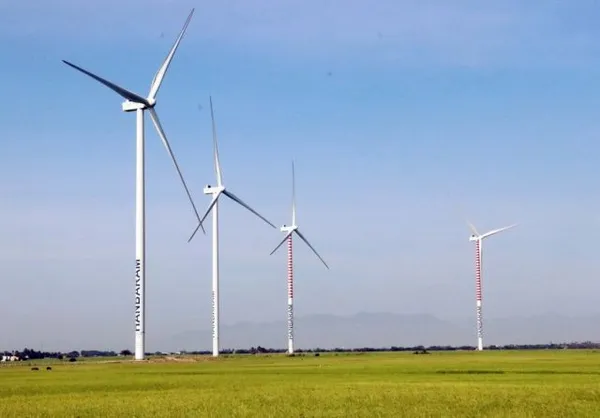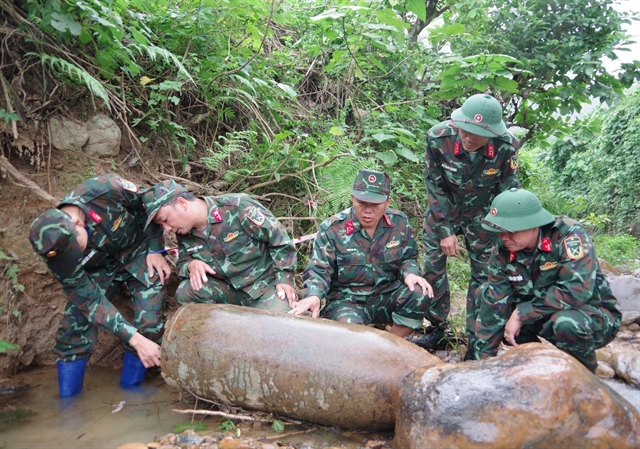 Society
Society

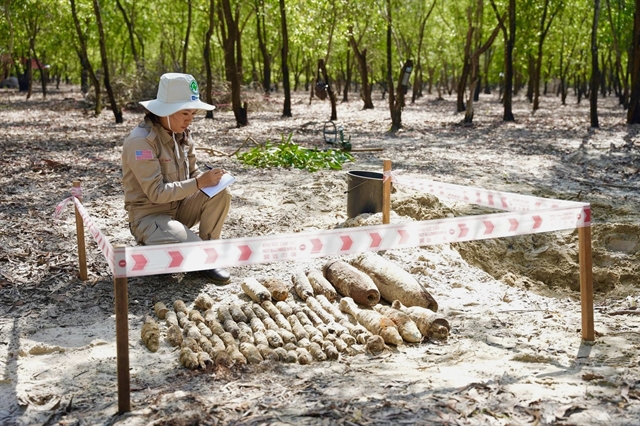 |
| Lê Thị Thu Hà, head of a demining team, records the explosives discovered in a wartime ammunition storage in the central Quảng Trị Province. — VNA/VNS Photo |
HÀ NỘI — Around 5.6 million hectares, equivalent to 17.71 per cent of Việt Nam’s total area, are still contaminated with unexploded ordnance (UXO) as of the end of 2023.
Việt Nam is among the countries with the highest rates of UXO contamination in the world.
It is estimated that approximately 800,000 tons of explosives were left across Việt Nam after the wars, most of which are concentrated in the central and southeastern regions and the Central Highlands.
A tremendous amount of time and resources are required for UXO disposal to protect people’s lives and environmental quality.
The Vietnam National Mine Action Centre (VNMAC) was established with the Prime Minister’s approval in 2014 to carry out the national action programme on mitigating the consequences of bombs and mines after wartime, known as Programme 504, dated April 21, 2010.
From 2010 to 2023, more than 500,000ha suspected of containing explosives were surveyed and cleared, of which 74,000ha were part of projects under Programme 504, around 300,000ha were of socio-economic development projects, and the rest were of humanitarian demining projects.
The cost of surveys and clearances totalled VNĐ12.6 trillion (US$511.7 million), with VNĐ10.4 trillion ($422.3 million) from the state budget and VNĐ2.2 trillion ($89.3 million) from non-refundable foreign aid.
Notable demining projects financed by official development assistance (ODA) include two Japanese-funded projects in Quảng Trị and Hà Tĩnh provinces covering 3,240ha with a $5.5 million budget.
A South Korean-funded project totalling $33 million was also deployed in Quảng Bình and Bình Định provinces covering more than 16,800ha, in which VNMAC also received assistance for capacity building, developing a database and hosting educational activities.
More than 6,000 victims of explosives were in attendance at these events, where they had access to health checks, rehabilitation sessions, vocational training and livelihood support.
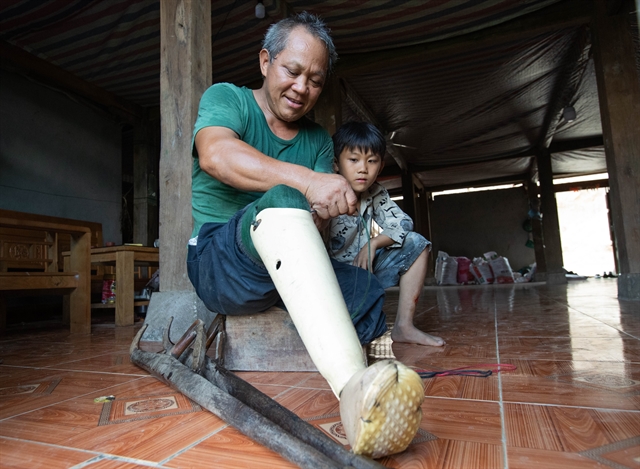 |
| Bồn Văn Hòn, a resident in the northern Hà Giang Province, survived two land mine explosions, which cost him both of his lower legs. His brother-in-law and son-in-law were also injured by wartime explosives. — VNA/VNS Photo Hoàng Hiếu |
Alongside these were other capacity training and technical support projects organised by non-governmental organisations (NGOs) from the US, UK, Norway, Germany and Australia.
In 2020, VNMAC put into operation an online information website to promote communication and mobilise foreign sponsorships, which had a significant positive impact on explosive ordnance risk education during COVID-19.
The website has reached and provided knowledge to more than three million people, especially vulnerable groups including children and farmers who regularly play and work on fields.
Since 1975, explosive remnants have killed more than 40,000 and injured over 60,000 in the country, a majority of them were children or the breadwinners of their families.
Every year on April 4, the International Day for Mine Awareness and Assistance, VNMAC coordinates with other ministries, departments and organisations to hold various events, aiming to raise awareness on preventing landmine accidents at the local level, while also presenting gifts for victims of explosives to reintegrate into their communities and help them secure sustainable livelihoods.
VNMAC also participated in mine action programmes of the United Nations, the Association of Southeast Asian Nations (ASEAN) and international organisations, while expanding its partnerships and cooperation agreements to alleviate the consequences of wartime bombs and mines. — VNS


